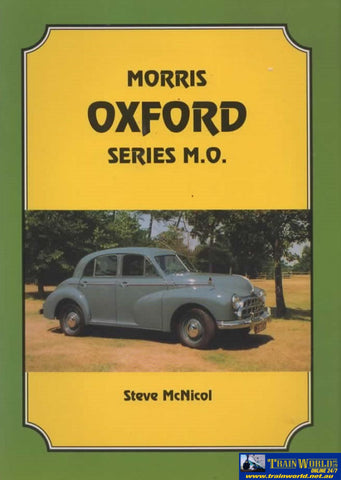Morris Oxford Series M.O. (ARMP-0079)
Product No.: ARMP-0079
Title: Morris Oxford Series M.O.
Author(s): McNicol, Steve
Illustrator(s): N/A
Publisher: Railmac Publications Australia
ISBN: 0949817694
Condition: New
Binding: Softcover
Dust Jacket: No Jacket
Edition: 1st Edition
Publication Year: 1991
Features: 64 Pages with Black/White Photos.
After the Second World War the Oxford MO replaced the 10. It was introduced in 1948 and was produced until 1954. The design was shared with Nuffield Organisation stable-mate Wolseley 4/50. Designed by Alec Issigonis, the Oxford, along with the Morris Minor, introduced unit construction techniques,[clarification needed] although it is not widely recognized as a true unibody car.[clarification needed] Torsion bar front suspension was another novelty, and 8-inch (200 mm) drum brakes hydraulically operated were fitted all around. Under the bonnet, the MO was a step back in technology from the pre-war Ten.
It used a side-valve straight-4 rather than the older overhead-valve unit. The single SU-carburetted engine displaced 1.5 L (1476 cc/90 in3) and with its output of 40.5 bhp (30.2 kW) at 4200 rpm could propel the car to 72 mph (116 km/h). The four-speed gearbox had a column gearchange and steering was by rack and pinion. Interior fittings were reasonably comprehensive by the standards of the time, with a full width shelf under the dashboard and "useful pivoting ventilator panels" (hinged quarterlights) at the front edge of each of the front doors and a rear window blind included in the price. Instrumentation included an oil pressure gauge, an ammeter and an electric clock.
Also available, albeit at extra cost, was a heater. The MO was sold as a 4-door saloon and 2-door Traveller estate with exposed wood. Both were four-seaters. It was replaced by the Series II Oxford in 1954.



